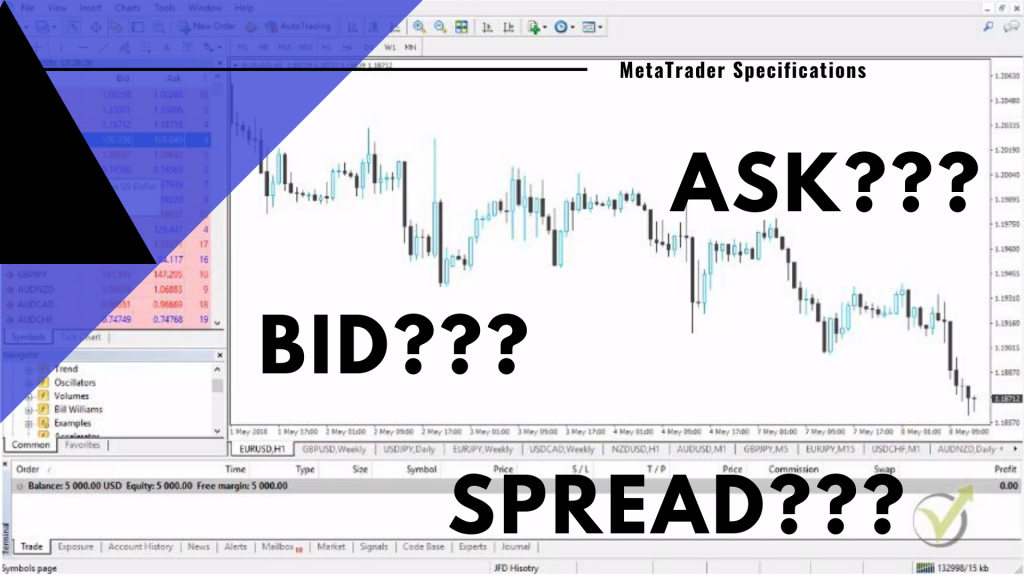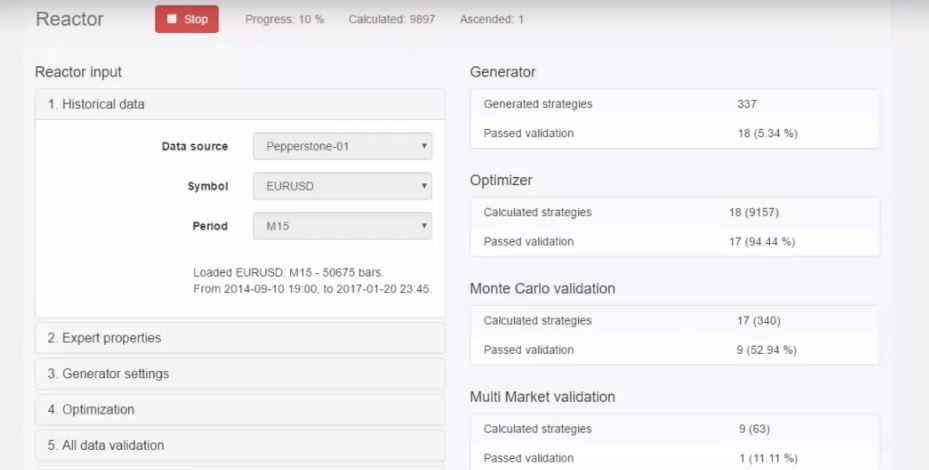Bid ask spread specifications – make sure to understand the basics
Bid ask spread is the top of this lecture from Petko Aleksandrov, Head Mentor at EA Forex Academy. The lecture is part of the Basic algorithmic trading course + 3 Robots course. Enjoy!
Hello, dear traders, we continue now with the market watch where I will explain more about the bid ask spread specifications.
Normally it is on the left side and you see here all the trading assets that you can trade with your broker. When you install the Meta Trader initially you will not see too many assets.
What you need to do, is you right click over any of the assets and you select show all.
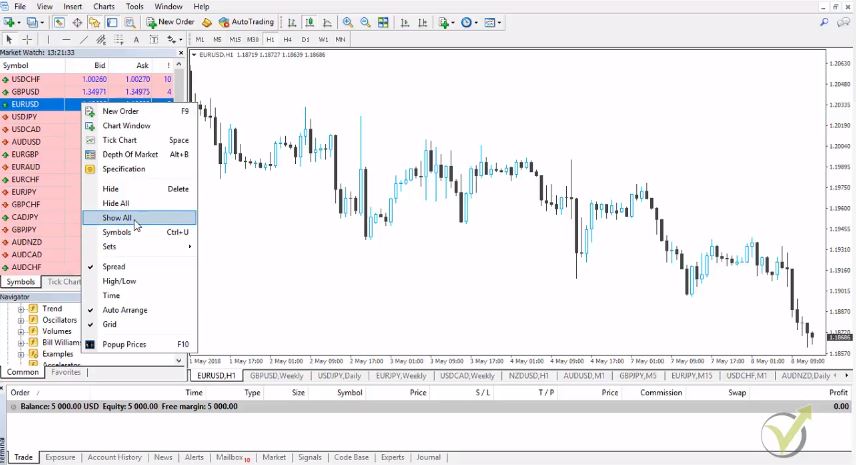
This way I see all assets provided by this broker. Now, if I go to the top, normally are the currencies, normally is the Forex market. Below you can see some indexes, then we have some stocks and you will see some commodities, futures cryptocurrencies. It really depends what your broker provides as trading assets.
But normally the huge, the regulated brokers are providing hundreds of assets and the competition between the brokers brings them to the point where they want to provide more and more assets and on a lower spread.
What is the spread, guys?
The spread is this third column that you see here and this is the difference between the bid and the ask price.
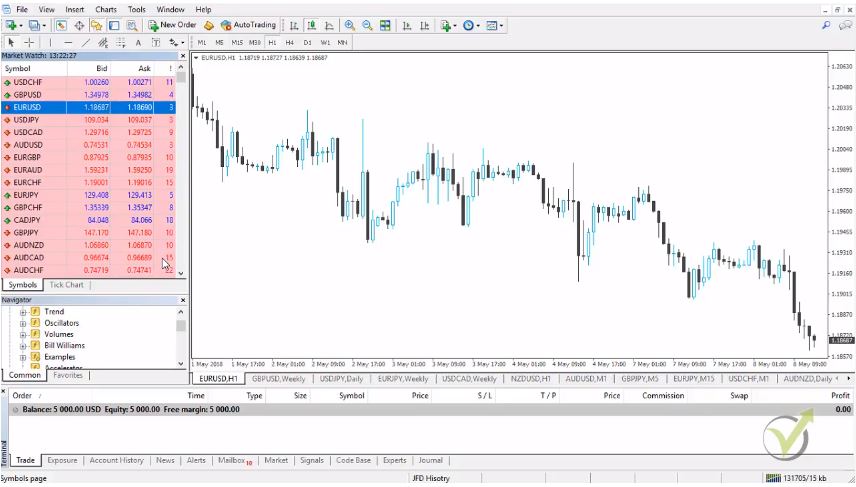
That is why bid ask spread are related to each other.
It is the very same thing like if you go to the exchange bureau to exchange some currency if you go for a vacation or for a holiday and you want to exchange your currency with the currency of the country where you are going. And what you see in the exchange bureau is that there is difference between the bid and the ask price. Or normally there they say the buy and the sell.
The difference in the exchange bureaus obviously is much bigger than the one over here because here is very, very small. If you see EURUSD 1.1870 and on the exchange bureau you will see there are 2-3 sands or even bigger difference. So, it’s possible that the buy price for example will be 1.1875 and the sale price will be 1.1870.
It could be even much, much bigger depending on the currencies that you’re exchanging but here the difference is few points. You see the EURUSD price at the current moment is 1.1870 and there is one last digit that we call point. And with the regulated brokers, with the huge brokers the difference between the ask and the bid price within this last fifth digit which is the point.
It’s a very, very small spread and this is of course very good when you are trading with Expert Advisors. Because you will have many trades opened and we don’t want to pay a spread. Actually, we don’t pay the spread, everybody says pay spread, I use it also but normally we don’t pay the spread.
Because when we buy an asset, when we buy EURUSD for example, we buy on the ask price. And when we sell, we sell on the bid price.
So, the difference is the spread. That is why the bid ask spread are so close connected.
We just buy at a little bit higher price and we sell on the lower price.
For example, if I buy at 1.18716 and I close the position I will close it on the bid price because when I close a buy obviously this is a sell. One more time I buy on the ask price and I sell on the bid price. Also, when I buy on the ask price and I close the position I will close it on the bid price.
And the same thing if I sell on the bid price and I close the position I will close it on the ask price, on the higher price. Basically this is how we pay the spread when we execute the orders on the bid and the ask price. There is no physical payment of the spread, you cannot see it anywhere here in the terminal which I will explain you a little bit later.
But simply we pay it because we buy on the ask price and we sell on the bid price. And the recent years most of the brokers are having five digits. After the point you see 1.1871 – 1.1872 and there is one more digit at the end. The third and the fourth are the pips. You can see here 1870, so 70 are the pips and the last one is the point.
And for example, if you buy at 1.1870 and you close at 1.19, you will have 30 pips profit. And the JPY currencies, you can see USDJPY below are having three digits after the point. So, 04 are the pips and the last one is the point.
For example, if you sell now on the bid price and you close it on ask price 109.000 you will benefit these four pips. I hope this is clear.
Now, if you don’t see this third column and normally you will not see it when you install the Meta Trader you need to go right mouse and spread. If you don’t see it, click right mouse and go to spread, you will see it over here. And you can see the major currencies, what we consider to be major currencies are:
- GBPUSD
- EURUSD
- USDJPY
- USDCAD
- AUDUSD
- NZDUSD

AUDUSD is slang for Australian Dollar versus the American Dollar.
There are a couple of slang words, so for example GBPUSD is called to be the Cable. EURUSD you can call it just Euro. USDJPY you can just call it the Yen, the CAD. The Aussie, Aussie is Australian Dollar versus the American Dollar and the New Zealand actually is called Kiwi this one over here. New Zealand versus the American Dollar.
Sometimes you can hear or read in analysis, or traders, or mentors that they say Kiwi. The most traded currencies are versus the American Dollar and they have lower spread:

It’s essentially imported when we trade with Expert Advisors to have lower spread to the minimum.
This means that bid ask spread distance is very tiny. Small, small spread. Because the Expert Advisors open many trades and when we have huge spread it can reflect actually the result and it happens very often to me. With some of the courses I provide Expert Advisors. I will provide Expert Advisors in this Basic algorithmic trading course + 3 Robots as well. So, you can practice and see how they work.
But it happens very often that I have been testing Expert Advisor and it shows good profit and students are writing me back that they don’t show good profit. And more than 90% of the time this is because they have very huge spread with their broker and finally the result is negative instead of positive.
If you want to open any asset you just click right mouse and you go to chart window and it will open. I have actually now too many over here, so it will go to the end. You can see there are small arrows and I can click to find it-this one over here that open. You can see it came by default with some indicators.
If you want to remove right click, indicators list and you remove the indicators.:
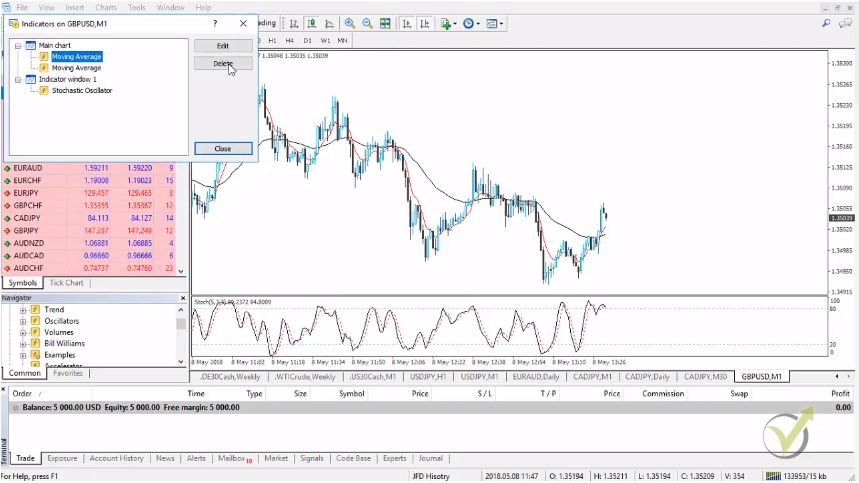
You have the pure chart over your screen at this case for the GBPUSD.
This is the market watch.
This is what we see the bid ask spread. One more time we buy on the ask price and we sell on the bid price.
When we buy on the ask price, we close the position on the bid price. And when we sell on the bid price we close the position on the ask price. And the difference is the spread, this is where the broker benefits.
The broker will benefit obviously this spread and this is inevitable of course for us. And when there is no volatility even sometimes for EURUSD with some of the brokers you will see zero spread. But this is very rare. You will see normally small, small spread with a regulated broker and this is very normal.
Thank you for reading and I will continue with more information in the Basic algorithmic trading course + 3 course.
If you are interested for more algorithmic trading courses please visit: https://eatradingacademy.com/tracks/algorithmic-trading/.
For any questions you can always write in our support FORUM.

